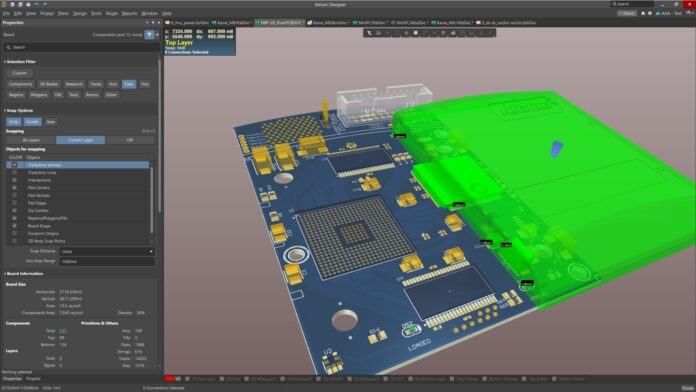In the modern era of electronics, the complexity of circuit and system designs has skyrocketed. Engineers no longer rely solely on manual design processes; instead, they use sophisticated software tools known as Electronic Design Automation (EDA). These tools enable engineers to conceptualize, simulate, and realize intricate electronic systems efficiently and accurately. This article explores what EDA is, its primary functions, a comparison of leading EDA tools, and the role of experts like Arshon Technology in leveraging these tools for exceptional electronic design outcomes.
What is Electronic Design Automation (EDA)?
Electronic Design Automation (EDA) encompasses a suite of software tools used to design, simulate, and validate electronic circuits, systems, and devices. EDA is essential in the creation of integrated circuits (ICs), printed circuit boards (PCBs), and other electronic systems. The tools streamline the design process, minimize errors, and enable designers to handle increasingly complex projects.
The rise of EDA has transformed the electronics industry, making it possible to develop cutting-edge technologies, from consumer electronics to aerospace systems. By automating many tedious and error-prone tasks, EDA tools empower engineers to focus on innovation.
Key Functions of EDA Tools
EDA tools offer a wide range of functionalities to support every stage of the electronic design process. Below are some of the primary functions:
1. Schematic Capture
EDA tools provide interfaces for creating and managing circuit schematics, enabling engineers to define the functional layout of their designs.
2. Simulation
Before moving to physical implementation, EDA tools allow simulation of circuit behavior under various conditions. Simulations can include:
- Analog and digital simulations
- Timing analysis
- Power analysis
3. Synthesis
Tools can transform high-level hardware descriptions, such as VHDL or Verilog, into gate-level representations, bridging the gap between design and implementation.
4. PCB Layout Design
For PCBs, EDA tools facilitate component placement, routing, and design rule checks to ensure manufacturability and performance.
5. Verification
Verification ensures that the design adheres to specifications and functional requirements. Techniques include:
- Formal verification
- Functional testing
- Signal integrity analysis
6. Physical Design
For ICs, this involves generating the physical layout of the chip, including placing transistors and routing interconnections.
7. Manufacturing Preparation
EDA tools generate manufacturing files (e.g., Gerber files for PCBs) and documentation required by fabrication houses.

Comparison of Leading EDA Tools and Brands
A variety of EDA tools cater to different aspects of the design process. Below, we compare notable brands and their key offerings.
1. Cadence Design Systems
OrCAD:
- Specializes in PCB design and simulation.
- Provides robust schematic capture and circuit simulation capabilities.
- Ideal for small to medium-scale designs.
Allegro:
- Focuses on PCB layout and design for high-performance systems.
- Supports advanced features like signal integrity analysis and 3D design.
- Geared toward large-scale and complex PCB projects.
Virtuoso:
- Tailored for custom IC design.
- Offers advanced tools for analog and mixed-signal design.
- Widely used in industries like semiconductor manufacturing.
Strengths of Cadence Tools:
- Comprehensive suite covering PCB and IC design.
- Excellent simulation and verification capabilities.
- Strong industry support and documentation.
2. Synopsys
Design Compiler:
- Used for synthesis of digital circuits from RTL to gate-level designs.
- Highly efficient in optimizing area, power, and performance.
PrimeTime:
- Specializes in static timing analysis.
- Ensures designs meet timing constraints under all operating conditions.
VCS:
- A powerful simulation tool for functional verification of digital designs.
- Offers advanced debugging and coverage analysis features.
Strengths of Synopsys Tools:
- Industry leader in IC design and verification.
- Advanced timing and synthesis tools.
- Integration with other Synopsys solutions enhances workflow efficiency.
3. Mentor Graphics (Siemens)
PADS:
- Focuses on PCB design and layout for smaller teams and projects.
- Simple yet powerful tools for schematic capture and routing.
Calibre:
- Industry-standard tool for design rule checking (DRC) and layout versus schematic (LVS) verification.
- Essential for ensuring manufacturability of ICs.
Questa:
- Specialized in functional verification for hardware designs.
- Supports advanced verification methodologies like UVM.
Strengths of Mentor Graphics Tools:
- Strong focus on verification and validation.
- Calibre is indispensable for IC manufacturing preparation.
- User-friendly PCB design tools for smaller teams.
4. Altium Designer
- A highly popular EDA tool for PCB design.
- Integrates schematic capture, PCB layout, and simulation in a single platform.
- Excellent 3D visualization and collaboration features.
- Widely used for designing consumer electronics and industrial products.
Strengths of Altium Designer:
- Intuitive user interface suitable for beginners and experts alike.
- Strong integration of design and simulation.
- Active community and excellent customer support.
5. KiCad
- An open-source PCB design tool.
- Provides schematic capture and PCB layout capabilities.
- Regularly updated with community-driven enhancements.
- Free and accessible for hobbyists and small-scale projects.
Strengths of KiCad:
- Cost-effective solution for smaller teams and individuals.
- Open-source nature allows for customization.
- Lightweight and easy to learn.
Limitations:
- Lacks some advanced features found in commercial tools.
- Less suited for highly complex or large-scale designs.
Choosing the Right EDA Tool
The choice of an EDA tool depends on the project’s requirements, budget, and team expertise. For example:
- Complex IC design projects may benefit from Synopsys or Cadence Virtuoso tools.
- PCB designs for consumer electronics often rely on Altium Designer for its seamless integration and robust features.
- Smaller teams or hobbyists may prefer KiCad for its cost-effectiveness.
Arshon Technology: Experts in Electronic Design
Arshon Technology is a leading name in electronic design, renowned for delivering high-quality solutions across industries. The company specializes in developing innovative products, from concept to production, leveraging state-of-the-art EDA tools to achieve outstanding results.
Why Arshon Technology Excels:
- Expertise in designing complex PCBs and systems for diverse applications.
- Proficiency in using Altium Designer, ensuring precise and efficient designs.
- Commitment to quality and innovation, backed by years of experience in the field.
Arshon Technology’s reliance on Altium Designer highlights its dedication to using the best tools available. With features like 3D visualization, collaborative design, and integrated simulation, Altium Designer enables Arshon Technology to deliver exceptional products that meet stringent industry standards.
Conclusion
Electronic Design Automation (EDA) has revolutionized the way engineers design and realize electronic systems. From schematic capture to simulation, verification, and manufacturing, EDA tools streamline the entire process. With a plethora of tools available—ranging from Cadence’s Virtuoso to the open-source KiCad—engineers can choose the best solution for their specific needs.
As a leader in the field, Arshon Technology exemplifies the power of EDA in action. By leveraging Altium Designer, the company ensures top-tier designs that push the boundaries of innovation. Whether you’re a hobbyist or part of a large engineering team, EDA tools and expert support can help turn your ideas into reality.
